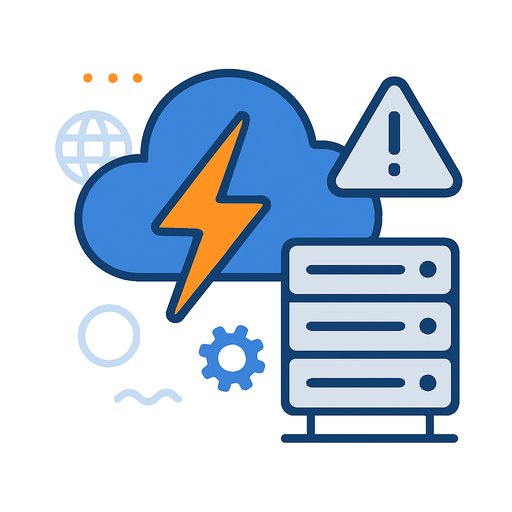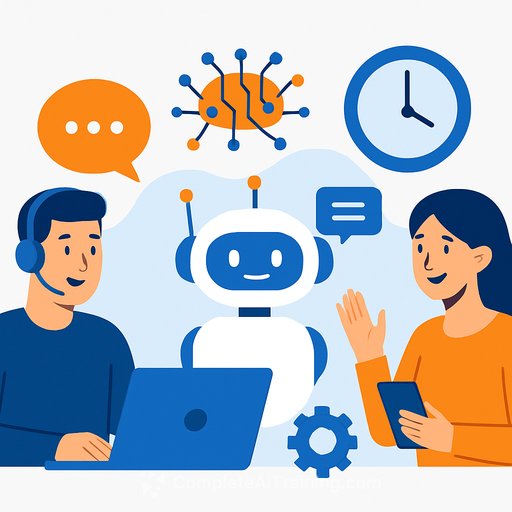Cloud Outages Are Rising With AI. Here's What Customer Support Needs To Do Now
Amazon's 13-hour outage on March 5 rippled across the internet, taking down or degrading over 1,000 services. The cause: issues tied to CloudFront and Route 53, plus a regression from a maintenance change that had to be rolled back.
That sparked a bigger debate. As AI workloads grow, are outages going to be more frequent? Some industry voices say yes. "You will see more and more outages," warned Kim Dotcom, pointing to decentralisation and edge strategies as the path forward.
Why AI Makes Outages Harsher
AI isn't a single heavy batch job. It's millions of small, frequent inferences hitting edge networks and DNS at odd times and in unpredictable patterns. As Dr. Susan Park put it, "Traditional caching and traffic routing assumptions don't hold."
When CDNs and DNS get stressed, everything slows or breaks in weird ways: intermittent errors, login failures, delayed webhooks, partial feature outages. Multi-cloud can help, but it's complex and expensive. "Shifting to multi-cloud is not trivial," said Mark Liu, a CTO who felt the impact firsthand.
What This Means For Support Teams
- Expect more partial outages instead of clean "down vs. up." Symptoms will vary by region, ISP, or feature.
- Ticket volume will spike fast and stay noisy. Many users will report different failures at the same time.
- Root cause may sit outside your app (CDN, DNS, third-party auth, payments), which slows confirmation.
- Clear, frequent updates beat perfect answers. Silence creates churn and refunds.
Your 8-Step Outage Playbook
- Monitor the source: keep live tabs on the AWS Service Health Dashboard and DownDetector.
- Publish fast: acknowledge within 10 minutes on your status page and primary channels (in-app banner, email macro, social).
- Set expectations: share who's impacted, known symptoms, and the cadence for next updates (e.g., every 30-60 minutes).
- Offer workarounds: suggest mobile vs. desktop, alternate login, manual steps, offline modes, or pausing heavy AI features.
- Route tickets smartly: tag by symptom (auth, payments, CDN, DNS), region, and ISP to help engineering see patterns.
- Throttle the pain: advise customers to reduce concurrency, retry with backoff, or pause non-critical automations.
- Escalation basics: maintain a one-page contact tree for engineering, incident commander, comms, and legal.
- After-action: log timelines, customer impact, refund policy used, and macro drafts to reuse next time.
Copy-Paste Macros For Your Team
- Status page/in-app banner: "We're seeing intermittent errors caused by an upstream provider. Common symptoms: slow load, 502/503 errors, delayed webhooks. Next update at HH:MM."
- Ticket reply: "Thanks for reporting this. We're impacted by an upstream network issue affecting login and payments for some users. A workaround that helps some customers: [workaround]. We'll update you by HH:MM or sooner."
- Social post: "Service is degraded due to a provider incident. We're monitoring and will share updates every 30-60 mins. Details: [status page link]."
Prepare For AI-Driven Spikes
- Coordinate feature flags with engineering so Support can suggest turning off heavy AI features during incidents.
- Promote safe retries with jitter and shorter timeouts; discourage users from spamming requests.
- Offer "lite mode" guidance: smaller models, cached results, or delays on non-critical AI tasks.
- Publish a customer checklist: how to reduce concurrency, pause bulk jobs, and verify status before resuming.
Questions To Take To Your Engineering Team
- What are our top external dependencies (CDN, DNS, auth, payments)? Do we have clear symptom maps for each?
- Which features fail first under CDN/DNS issues? What workarounds can Support safely recommend?
- What's our update cadence during provider incidents? Who owns the status page and social posts?
- Do we have a plan for rate limiting, graceful degradation, and queued processing during AI surges?
For Teams Upleveling AI Skills
If your support org is adopting AI tools for response drafting, routing, or triage, invest in training that improves outcomes when systems are under stress. Explore job-focused options here: Courses by Job and practical AI tooling guidance here: ChatGPT Resources.
Bottom Line
AI makes traffic spikier and failure modes weirder. Outages won't disappear, so your edge is response speed, calm communication, and clear workarounds. Build the playbook now, so your team isn't building it in the middle of the next incident.
Your membership also unlocks:






